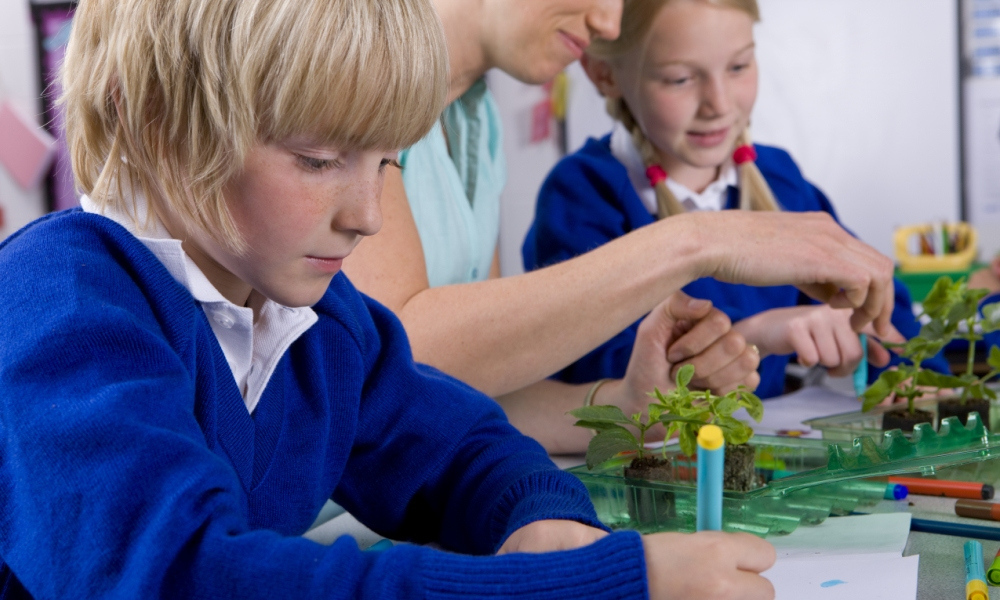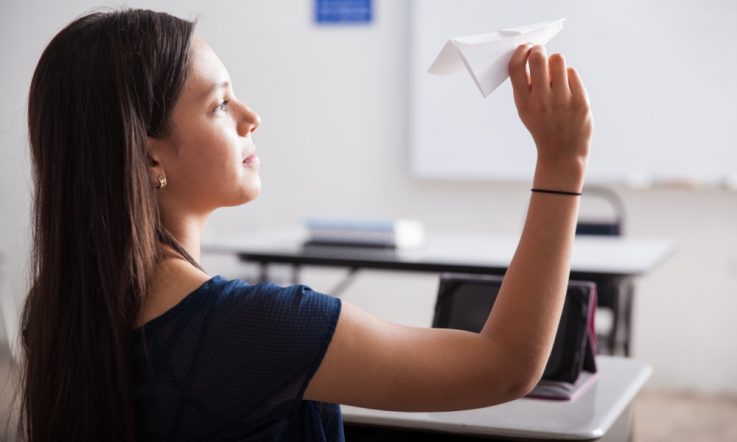Queensland science teacher Sarah Chapman is passionate about engaging youngsters in STEM (science, technology, engineering and mathematics) education and has travelled the world gathering evidence of international best practice.
It's a research journey that's taken her to Singapore, Finland, the United Kingdom, United States and New Zealand, visiting schools, businesses, tertiary institutions, STEM outreach programs, peak bodies and government departments. ‘The idea was to gain expertise and best practice across the whole STEM ecosystem, not just in schools,' Chapman tells Teacher.
The Head of Science at Townsville State High School embarked on the trip after being awarded a 2016 Barbara Cail STEM Fellowship. Chapman and fellow award recipient Dr Rebecca Vivian, from the University of Adelaide, spent six weeks overseas. They recently released a research report – Engaging the Future of STEM: A study of international best practice for promoting the participation of young people, particularly girls, in science, technology, engineering and maths (STEM).
It details key findings in several stakeholder areas, including: peak organisations; STEM industry; and early childhood, primary and secondary education. Drawing on their observations of best practice, Chapman and Vivian set out a vision for STEM education in Australia driven by five key components for a successful strategy:
- Coordinated collaboration between stakeholders across the STEM ecosystem. Stakeholders commit to actionable strategies that change the culture of STEM to be equitable for all, where there is a balanced representation of all groups of people within the STEM ecosystem;
- A shared vision, priorities and common language around STEM to develop a collaborative, positive and inclusive STEM culture within and outside of education and industry contexts;
- Sustainable inclusive education and engagement for all STEM fields, from early childhood through to professional leadership;
- Curriculum implementation (both in school classrooms and outreach) that empowers students through choice, skill development and allows students to realise real world applications of STEM; and,
- Sustained professional development, capacity and engagement of teachers.
The report also lists ‘essential elements' of high performing STEM programs aimed at young people, practical insights for programs seeking to target girls, and eight suggested action points.
In relation to early childhood, primary and secondary education, Chapman and Vivian write: ‘Education plays a key role in STEM engagement and in many cases can be the first exposure to STEM for many young children. Early childhood, primary and secondary education provide many avenues to promote STEM engagement, such as providing learning experiences through curriculum-related activities, relevance by linking in real world experiences, expertise by linking in industry and research, and extension programs and experiences, such as mentorships.'
The 64-page report features 18 case studies of successful stakeholder projects and programs, including several school stories. Chapman tells Teacher there's an international and national crisis when it comes to getting enough young people interested and upskilled in STEM so that they can pursue careers in STEM-related fields. Schools are a crucial part of the pipeline.
‘If you've got more kids engaging then therefore you're going to have more kids in the workforce later on in life doing those STEM-based courses. So, yes there is a national crisis in terms of getting kids into the senior sciences. Our school doesn't sit in that boat, we're actually going against the trend … but I'm very aware of the national issue and the requirement for us to be able to have capable problem solvers and STEM-skilled young people in the future.'
She says one of the most surprising things from the research study was that, travelling across the world, everybody had the same vested interest and was on the same page of wanting to make things better. ‘Because it is a global issue, it sort of illustrated the importance of bringing together people from across the globe to solve this. It's not something I think will be easily solved in just one country. So, I guess that was surprising; you don't know what other countries are thinking but I think the thinking was very uniform … there might have been different priorities but everybody was trying to get more kids involved and excited and upskilled in STEM.
‘Plus, also how advanced some countries were in their STEM engagement and what they were doing, was also surprising.' Reflecting on some of the work being done in the different countries she visited, Chapman says schools in Singapore had a lot of embedded technologies that were used as a way of enhancing learning rather than just being an ‘add-on'. ‘Also the whole experiential hands-on learning was really done well in Finland – having kids go out in the field and be learning about their environment and making that a part of learning.
‘And the way a lot of the schools in the US are now teaching different subjects – they combine English with Biology and History with Chemistry. So, subjects have a bit more context and relevance because they're linking to things that the kids are learning. The kids learn Biology, they go on a field trip, they write poems about their environment and what they're learning rather than just [reading a book that doesn't relate to their learning or individual context]. That was quite interesting in terms of really seeing what you could do.
‘One of the English teachers was actually doing some postgraduate study in Science in order to enhance her students' writing skills. So, linking in that Science really strongly in order that the kids were able to communicate well in Science but also in English (in a Science context), which was quite exciting.'
Chapman says everyone can play their part but, ultimately, collaboration involving all stakeholders is crucial. ‘Everybody I think wants to make impact and wants to improve things. Each person can contribute, which gives a broader range of expertise but also shares the load and achieves something much more enriching and in-depth than you would achieve if you did it on your own.'
‘Engaging the Future of STEM: A study of international best practice for promoting the participation of young people, particularly girls, in science, technology engineering and Maths (STEM)', conducted by Barbara Cail STEM Fellows (Sarah Chapman and Dr Rebecca Vivian) was funded and supported by the Australian Government in partnership with Chief Executive Women Ltd. For the full report, click on the link: https://cew.org.au/wp-content/uploads/2017/03/Engaging-the-future-of-STEM.pdf
Do you have a school-wide plan in place to get more young people engaged in STEM subjects? What have you found works best in your setting? How do you measure the effectiveness?
What avenues do you use to promote STEM engagement? Have you considered any of the following options mentioned above: learning experiences through curriculum-related activities; providing real world experiences; linking students to those in industry and research; extension programs; experiences such as mentorships?



